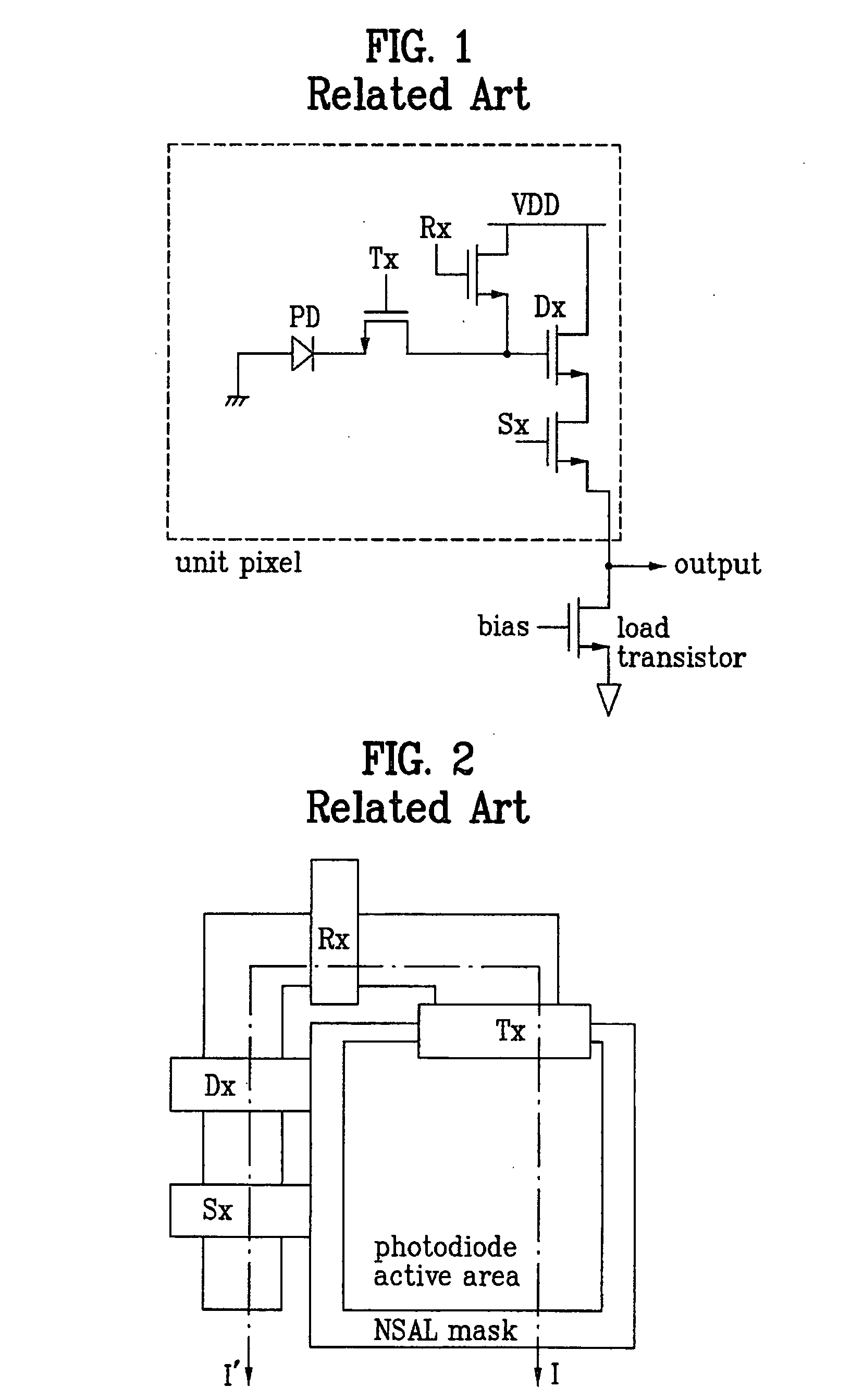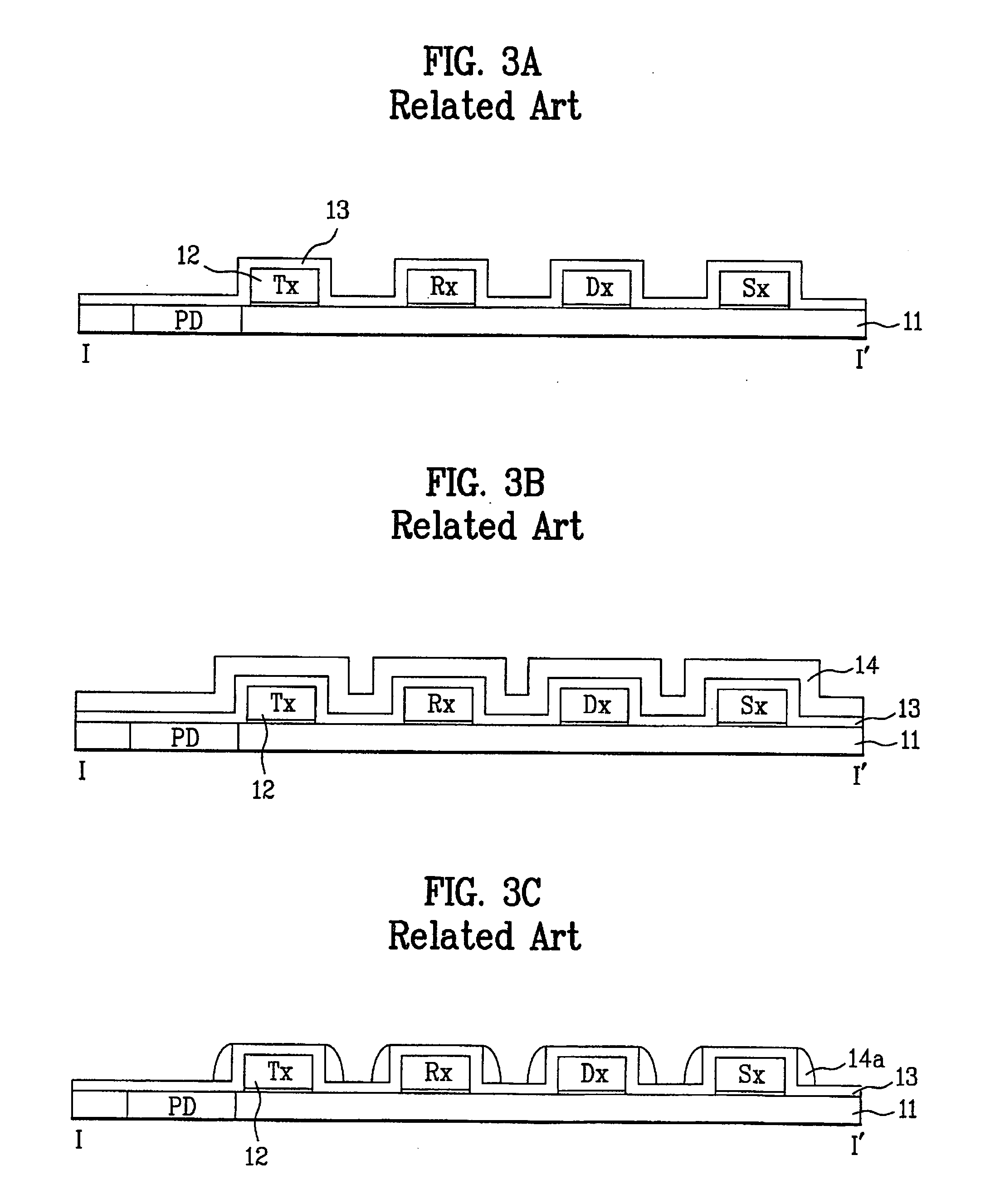Method for fabricating CMOS image sensor
- Summary
- Abstract
- Description
- Claims
- Application Information
AI Technical Summary
Benefits of technology
Problems solved by technology
Method used
Image
Examples
Embodiment Construction
[0040] Reference will now be made in detail to the preferred embodiments of the present invention, examples of which are illustrated in the accompanying drawings. Wherever possible, the same reference numbers will be used throughout the drawings to refer to the same or like parts.
[0041] Hereinafter, a method for fabricating a CMOS image sensor according to the present invention will be described with reference to the accompanying drawings.
[0042]FIG. 7A and FIG. 7D are cross sectional views of showing the process for fabricating a CMOS image sensor according to the preferred embodiment of the present invention, which mainly show a photodiode PD and an adjacent transfer transistor Tx.
[0043] As shown in FIG. 7A, a photodiode area PD is formed in a semiconductor substrate 31, and then a plurality of gates are formed on the semiconductor substrate 31 by interposing a gate oxide layer. Among the plurality of gates, one side of the gate 32 of the transfer transistor Tx is aligned to the...
PUM
 Login to View More
Login to View More Abstract
Description
Claims
Application Information
 Login to View More
Login to View More - R&D
- Intellectual Property
- Life Sciences
- Materials
- Tech Scout
- Unparalleled Data Quality
- Higher Quality Content
- 60% Fewer Hallucinations
Browse by: Latest US Patents, China's latest patents, Technical Efficacy Thesaurus, Application Domain, Technology Topic, Popular Technical Reports.
© 2025 PatSnap. All rights reserved.Legal|Privacy policy|Modern Slavery Act Transparency Statement|Sitemap|About US| Contact US: help@patsnap.com



